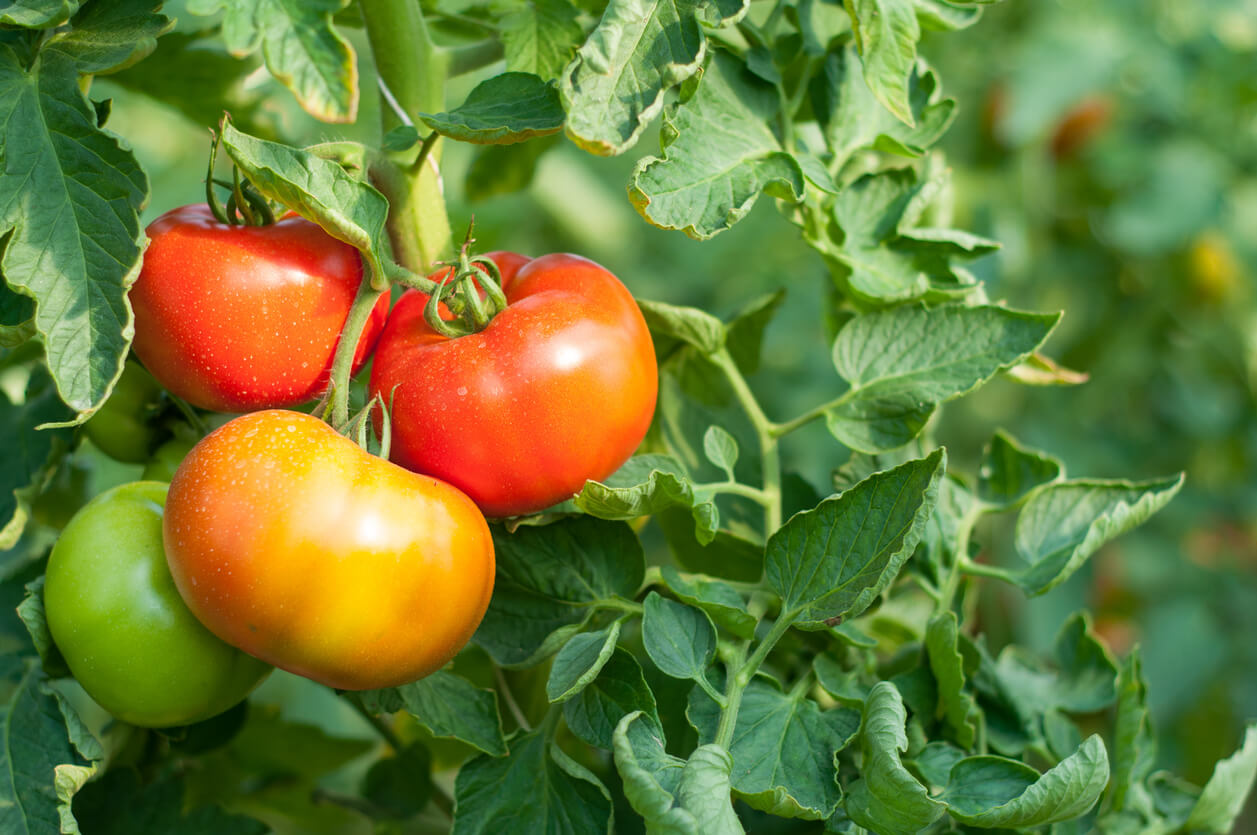
Homegrown Tomatoes on the Vine
Have you ever tried eating a whole, raw tomato like you would eat an apple? If you have, it’s best that you eat your own home-grown tomatoes and not those washed-out-looking, store-bought tomatoes. A fresh garden tomato—and not only the pop-‘em-in-your-mouth-size Cherry tomatoes—are simply succulent and delicious to eat, perhaps with a shake or two of salt as you munch.
As with the age-old debate about how to pronounce the word tomato—“You like to-MAY-to, and I like to-MAH-to” as the Gershwin song goes—some people debate whether tomatoes are vegetables or fruits.
Botanically speaking, tomatoes (Solanum lycopersicum) are fruits—berries actually. But, for cooking purposes, tomatoes are usually treated as vegetables. Tomatoes have much less sugar than typical fruits, which is another reason why some people view them as vegetables.
As if the debate about whether tomatoes are fruits or vegetables could ever be fully resolved by food scientists and chefs, the United States Supreme Court actually weighed in on the matter in 1893 to resolve a legal dispute about trade and tariffs. In Nix v. Hedden, the Court ruled that tomatoes are a vegetable because they are mainly served with dinner and not as a dessert, making tomatoes subject to tariffs on vegetables that didn’t apply to fruits at the time.
While there are, literally, thousands of varieties of tomatoes, this collection features six popular varieties that will give you some diversity in your harvest to help feed your kitchen with different tomatoes for different recipes. All tomatoes fall into these scientific hierarchy classifications:
- Kingdom: Plantae (plants)
- Order: Solanales (flowering plants)
- Family: Solanaceae (potato family)
- Genus: Solanum (nightshade)
- Species: Solanum lycopersicum (garden tomato)
- Variety: cerasiforme (garden tomato)
A Brief History of Tomatoes
Did you know that the tomato species started in Central and western South America? The Aztec word tomatl is the origin of what the Spanish dubbed tomate, and what we now call tomato! After conquering the Aztec Empire, Spaniards brought tomato seeds back to Spain, and, beginning in the 16th century, tomato growing spread throughout Europe.
At first, many Europeans used tomatoes only for decorative purposes, because tomatoes were thought to be poisonous to eat—some even called tomatoes the “poison apple.” Wealthy Europeans actually feared tomatoes for their presumed lethal qualities. In fact, it wasn’t the tomatoes that were poisonous, but the fancy pewter plates and platters upon which they were sometimes served, which would leach lead when the acidic tomatoes rested on the pewter.
In Europe, it took a few hundred years for the tomato’s fortunes to turn. In the 1880s, pizza was invented in Italy and became a popular dish topped with tomatoes or tomato sauce. In the United States, while the stigma of tomatoes wasn’t as widespread as in Europe, the Civil War boosted the tomato’s reputation because Union troops could efficiently be fed canned tomatoes. Consumption boomed, and production eventually rivaled potatoes as a major crop.
Today, the tomato is a revered plant in the United States. Reynoldsburg, Ohio claims to be the birthplace of the commercial tomato and holds an annual Tomato Festival, complete with a Tomato Festival Queen.
Have you ever visited the Tomato Festival in Reynoldsburg, Ohio? Please tell us about the unique ways you celebrate tomatoes!


 Previous
Previous

